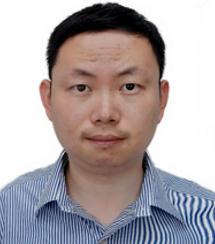


Biography: Dr. Hao Tang has worked on advanced lithography research and development at multiple IBM facilities since he joined IBM in 2013. He received his Ph.D. degree in Chemical Engineering from the University of Texas at Austin in 2012 and his B.S. degree in Microelectronics from Peking University in 2007. His research interest includes top-down nanofabrication approaches such as immersion lithography and EUV lithography, as well as bottom-up approaches such as self-assembly. Specifically, he explored the bioconjugation of DNA to polymers for self-assembly applications and the combination of lithography and self-assembly. His research interest also includes electronic materials such as liquid crystalline organic semiconductors and resistive switching memory materials.
Speech Title: DNA-Polymer Conjugation and DNA-Guided Particle Self-Assembly
Abstract: The chemical linking of DNA to polymers has found wide applications in biosensors, drug delivery and self-assembly. Here we study the conjugation of synthetic DNAs to poly(methyl methacrylate) (PMMA) copolymers in the pursuit of creating mesoscale particles for DNA-guided particle self-assembly. A process of fabricating particles with stepwise lithographic patterning and DNA conjugation was described, where different DNAs can be attached to different surfaces in this process. Many process elements were developed, including polymer synthesis and coating, DNA conjugation, analysis of particle self-assembly, and particle patterning and harvesting. A series of PMMA copolymers were synthesized to enable the attachment of DNA with several different functional groups, including amine, thiol, and azide. The DNA density on the polymer surface was quantified using a fluorescence-based technique. Successful optimization of the conjugation conditions yielded up to 10% DNA surface coverage with negligible non-specific binding. The surface-conjugated single-strand DNA retained their ability to hybridize with their complementary strands and successfully directed the assembly of micron-size particles. To study the assembly behavior of DNA-conjugated particles, DNAs were attached to carboxylic acid functionalized polystyrene microspheres and imaging flow cytometry was used to analyze their self-assembly behavior. Imaging flow cytometry separated different assembly populations including dimers, trimers, and larger assemblies very distinctively and enabled detailed analysis of effect of structural and process variables on the yield of assembly. Finally, lithographically patterned paticles were also tested for self-assembly. Self-assembly was observed in lithographically patterned paticles with lower yield compared with polystyrene microspheres.